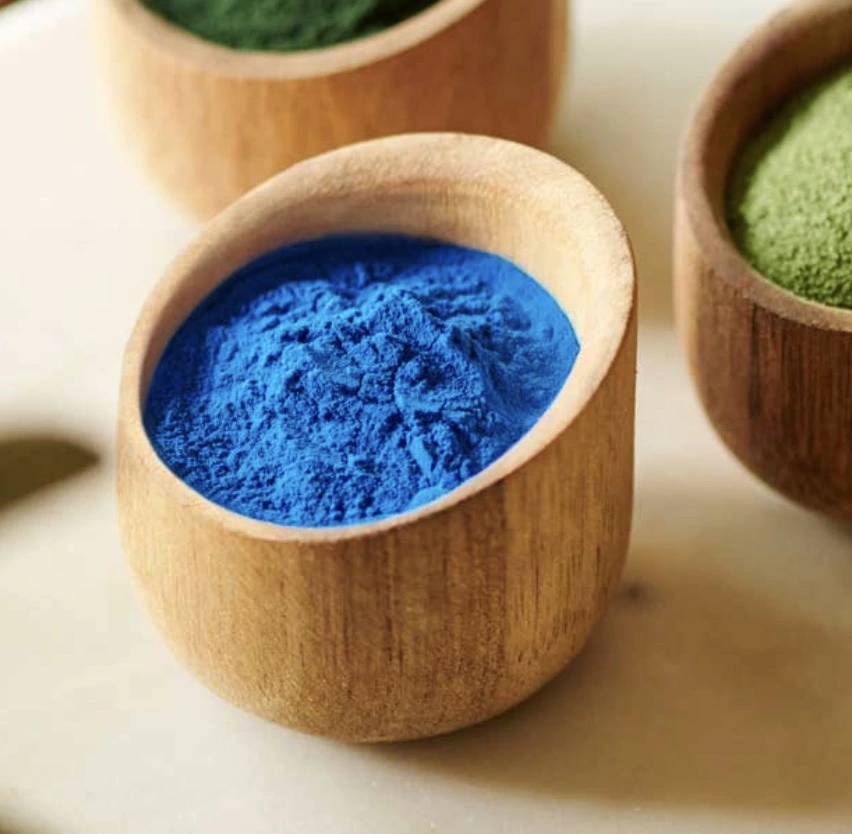Can turmeric powder remove pigmentation?
Turmeric has been used for centuries in traditional medicine and skincare practices. Its active compound, curcumin, is known for its potent antioxidant and anti-inflammatory properties. In recent years, there has been growing interest in using turmeric powder for addressing skin pigmentation concerns. This article explores the potential of Turmeric Powder Pigment 100(II) in combating dark spots and hyperpigmentation.

How Turmeric Powder Pigment 100(II) Fights Dark Spots?
Turmeric Powder Pigment 100(II) is a concentrated form of curcumin extracted from turmeric roots. This powerful ingredient works in multiple ways to address skin pigmentation issues:
Inhibition of Melanin Production
One of the primary mechanisms by which Turmeric Powder Pigment 100(II) combats dark spots is through its ability to inhibit melanin production. Melanin is the pigment responsible for skin color, and overproduction can lead to hyperpigmentation. Curcumin in turmeric has been shown to suppress tyrosinase, a key enzyme involved in melanin synthesis.
Antioxidant Protection
Turmeric Powder Pigment 100(II) offers powerful antioxidant benefits that help protect the skin from free radical damage. Oxidative stress can lead to increased melanin production, worsening pigmentation concerns. By neutralizing free radicals, turmeric helps prevent the skin from darkening further, promoting a more even and radiant complexion. Its protective properties support overall skin health, minimizing the impact of environmental stressors on pigmentation.
Anti-inflammatory Effects
Inflammation can aggravate pigmentation issues and contribute to post-inflammatory hyperpigmentation. The anti-inflammatory properties of Turmeric Powder Pigment 100(II) help soothe the skin, minimizing the risk of pigmentation caused by inflammatory reactions. By calming irritation, turmeric helps prevent the development of dark spots or discoloration, promoting a more even skin tone and reducing the long-term impact of inflammation on pigmentation.

Top Skincare Uses of Turmeric Powder for Pigmentation
Turmeric Powder Pigment 100(II) can be incorporated into various skincare routines to address pigmentation concerns. Here are some effective ways to use this ingredient:
DIY Face Masks
Making a homemade face mask with Turmeric Powder Pigment 100(II) is a popular way to address dark spots. Simply mix a small amount of the powder with ingredients like yogurt, honey, or aloe vera gel to create a soothing and brightening mask. Apply the mixture to clean skin, leave it on for 15-20 minutes, then rinse off. This natural mask helps reduce pigmentation while nourishing and rejuvenating the skin for a more radiant complexion.
Spot Treatment
For targeted treatment of specific dark spots or areas of hyperpigmentation, create a paste by mixing Turmeric Powder Pigment 100(II) with a few drops of water or rosehip oil. Apply this paste directly to the affected areas and leave it on overnight. Rinse off in the morning and follow with your regular skincare routine.
Serum Booster
Boost the effectiveness of your current skincare routine by adding a pinch of Turmeric Powder Pigment 100(II) to your favorite serum or moisturizer. This simple addition enhances the brightening and skin-evening properties of your products, helping to improve overall complexion. Turmeric’s natural antioxidant and anti-inflammatory benefits support healthier skin while complementing the effects of your existing skincare regimen for a more radiant, even skin tone.
Exfoliating Scrub
Combine Turmeric Powder Pigment 100(II) with gentle exfoliating ingredients like rice flour or finely ground oats to create a brightening scrub. Gently massage the mixture onto damp skin in circular motions to slough off dead skin cells and reveal a more even-toned complexion.
Is Turmeric Pigment 100(II) Safe for Daily Use?
While Turmeric Powder Pigment 100(II) is generally considered safe for topical use, it's essential to exercise caution and follow proper usage guidelines:
Skin Sensitivity
Some individuals may experience skin irritation or allergic reactions to turmeric. It's advisable to perform a patch test before incorporating Turmeric Powder Pigment 100(II) into your skincare routine. Apply a small amount to a discreet area of skin and wait 24 hours to check for any adverse reactions.
Staining Concerns
Turmeric is known for its vibrant yellow color, which can temporarily stain the skin. While this effect is usually temporary, it's important to be mindful when using Turmeric Powder Pigment 100(II), especially before important events. To minimize staining, limit the contact time and use in conjunction with other ingredients that can help mitigate the coloring effect.
Frequency of Use
For most people, using Turmeric Powder Pigment 100(II) 2-3 times a week is enough to see noticeable results without overloading the skin. However, everyone's skin is unique, so it’s important to pay attention to how your skin responds. If irritation or dryness occurs, reduce the frequency of use. Always listen to your skin’s needs and adjust the application as necessary to achieve the best results while maintaining skin comfort.
Sun Protection
While turmeric can help address pigmentation issues, it's crucial to remember that sun protection is key in preventing further darkening. Always use a broad-spectrum sunscreen with an appropriate SPF when incorporating Turmeric Powder Pigment 100(II) into your skincare routine.

Conclusion
In conclusion, Turmeric Powder Pigment 100(II) shows promising potential in addressing skin pigmentation concerns. Its ability to inhibit melanin production, provide antioxidant protection, and reduce inflammation makes it a valuable ingredient in the quest for even-toned skin. However, as with any skincare ingredient, results may vary, and consistency is key. If you're interested in exploring the benefits of Turmeric Powder Pigment 100(II) for your skin, consult with a skincare professional or reach out to Yangge Biotech Co., Ltd. at info@yanggebiotech.com for more information on high-quality turmeric extracts and their applications in skincare.
FAQ
Q: Can we get some samples to test before purchasing?
A: Of course, we can provide free samples of 20 to 100 grams, but the shipping cost is at the customer's expense. The shipping cost can be deducted from the next order, or the samples can be sent through your courier account.
Q: Do your products have relevant certifications?
A: Yes, our products are certified for HALAL, ISO, HACCP, Kosher, and other certifications.
Q: What is the minimum order quantity (MOQ)?
A: Small batches of samples can be customized according to your requirements.
Q: Do you offer OEM and ODM services? Can the formula be customized based on our own?
A: Of course, we provide ODM and OEM services to many customers. Our product range includes softgels, capsules, tablets, sachets, granules, and private label services. Simply contact us and let us know your requirements. Our experienced R&D team can also develop new products with specific formulas.
Please contact us to design your own branded products.
Q: How do you handle quality complaints?
A: First, we have a comprehensive quality control SOP. We provide authoritative third-party inspection reports for almost all products before shipment to minimize the possibility of quality issues. Second, we have a comprehensive return and exchange procedure. If there is a genuine quality dispute, we will strictly follow the SOP.
Q: How do you ship? How long does delivery take?
A: For small orders, we typically use DHL, UPS, EMS, FedEx, or TNT. Delivery typically takes 3-7 days. We also offer air and sea freight services. We have a strong freight forwarding team and can provide you with a one-stop service, including DDP and DDU.
Q: What are your payment terms?
A: 100% prepayment, payable by T/T, Western Union, MoneyGram, or PayPal.
Q: What is the shelf life of your products?
A: 2 years with proper storage.
Q: Is the packaging environmentally friendly?
A: We attach great importance to environmental protection and are constantly improving our product packaging. Some products are packaged in recyclable paper. Packaging materials are carefully selected to ensure product safety during transportation and storage, and to minimize environmental impact. We are committed to achieving a balance between environmental friendliness and practicality in our product packaging, and to contributing to sustainable development.
References
1. Lee, J. H., et al. (2020). "Curcumin and its derivatives: Their application in neuropharmacology and neuroscience in the 21st century." Current Neuropharmacology, 18(2), 94-140.
2. Nguyen, T. A., & Friedman, A. J. (2018). "Curcumin: A novel treatment for skin-related disorders." Journal of Drugs in Dermatology, 17(10), 1061-1067.
3. Panahi, Y., et al. (2019). "Efficacy and safety of phytosomal curcumin in non-alcoholic fatty liver disease: A randomized controlled trial." Drug Research, 69(2), 70-76.
4. Vaughn, A. R., et al. (2016). "Effects of turmeric (Curcuma longa) on skin health: A systematic review of the clinical evidence." Phytotherapy Research, 30(8), 1243-1264.
5. Zolghadri, S., et al. (2019). "Tyrosinase inhibitors: A review of recent advances." European Journal of Medicinal Chemistry, 178, 131-141.
Based on your location and order quantity, you will have the opportunity to receive a limited time free shipping promotion!

Who we are


